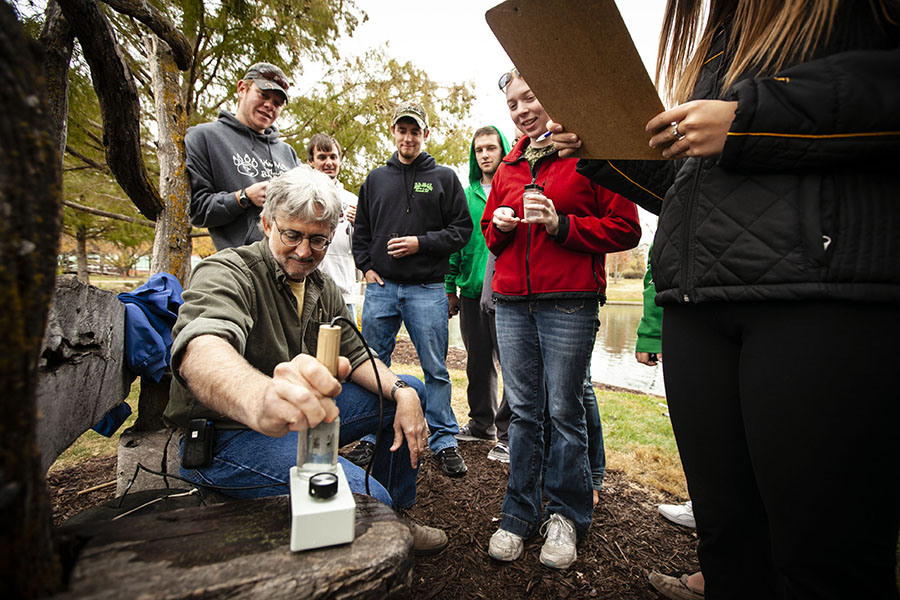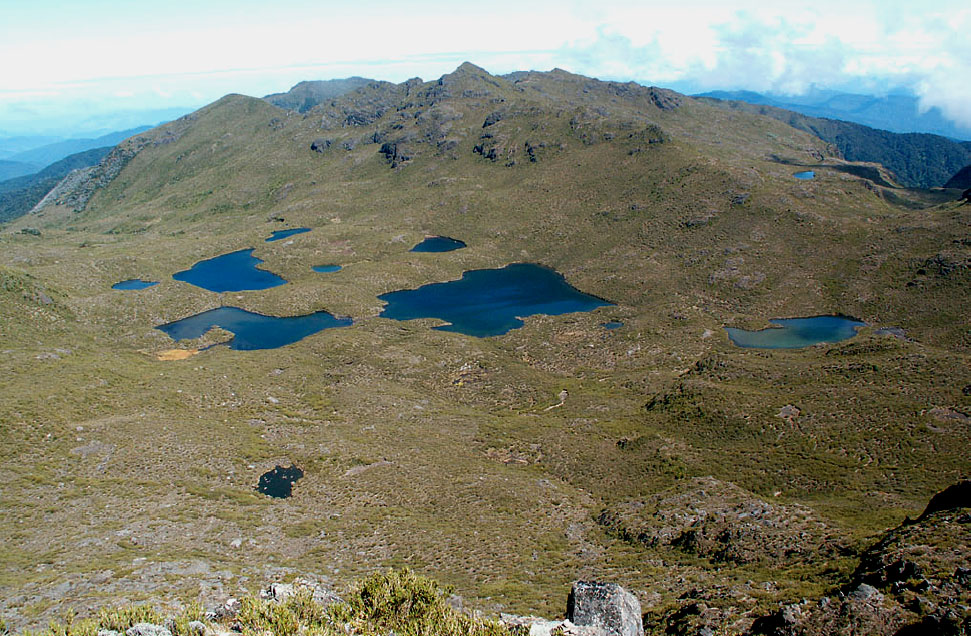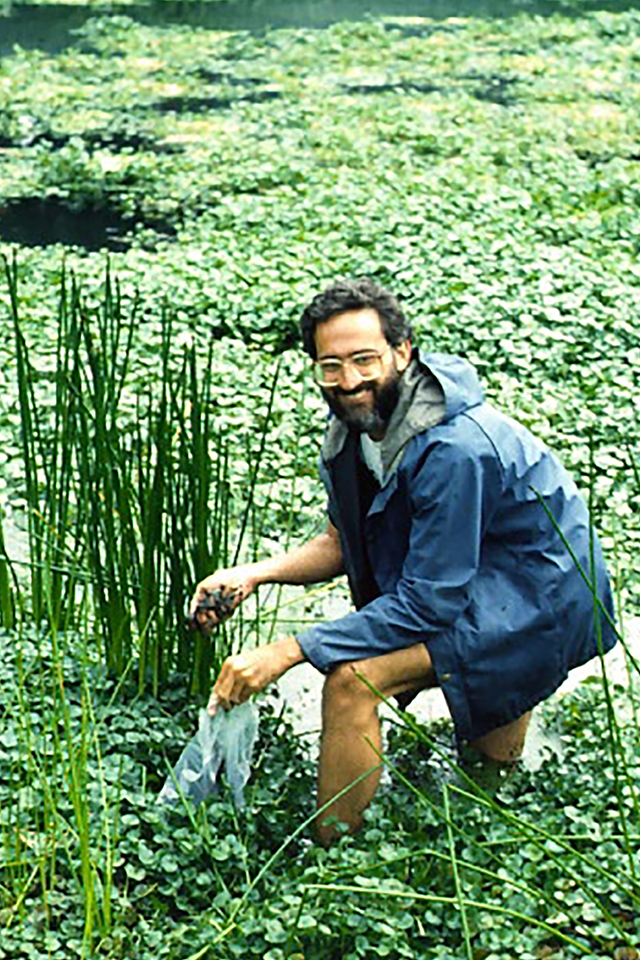
Dr. Kurt Haberyan, a professor of biology pictured above in 2011 during a research activity with Northwest students at Colden Pond, is the co-author of recently published research detailing the discovery of a unique form of algae. (Northwest Missouri State University photo)
The accepted species of Aulacoseira now number 117 after a little detective work by Northwest Missouri State University faculty member Dr. Kurt Haberyan.
Haberyan, a professor of biology, worked with Dr. Sally Horn, a professor of geography at the University of Tennessee, and their team of researchers to collect surface sediments from more than 90 Costa Rican lakes ranging from sea level to 3,570 meters in elevation. In a sample from mountaintop lakes, they discovered Aulacoseira umanai, a unique form of algae.
Their research of the species began in 1992 and reached a conclusion in July. The findings were published recently in Diatom Research.
“In some ways it’s a biologist’s dream,” Haberyan said. “Everybody wants to discover something new like this because the name of the species will persist long after I am gone. It’s sort of an immortality thing. It’s also kind of scary, because no matter what you find you’re not really an expert in that kind of species.”
Aulacoseira umanai differs from other Aulacoseira species because it has short separation spines and a thick ringleiste, which is an inner ledge within the collum of the cell. They make their cell walls of silica, a substance with an appearance similar to glass.
“This group is particularly attractive,” Haberyan said. “They are like little glass skeletons and sculptures. In Victorian times, people would collect these from all over and arrange hundreds of them on microscope slides, one at a time. They would make little patterns like kaleidoscopes and church windows.”

Haberyan and his research team found Aulacoseira umanai in the lakes of the Morrenas Valley in Costa Rica. (Submitted photo
Even in remote places in Costa Rica, there is pollution and pressure on water resources. Haberyan said it is important to document the species living there before the environment changes too much.
“In the long term, the real goal here is to see how these lakes have changed over time,” Haberyan said. “Knowing what species are in the modern lakes, and why, will tell us a lot about what was in the lake in the past when we look at mud that is deposited on the bottom.”
New DNA that is discovered with a species can be useful in research for medicines and finding information that may be transferred to another species. Aulacoseira umanai can be used in fossil research because it doesn’t decay much over time.

Haberyan and his research partner, Dr. Sally Horn, a professor of geography at the University of Tennessee, began their research of Aulacoseira in 1992. (Submitted photo)
The species is named after Gerardo Umaña Villalobos, a Costa Rican limnologist who aided the researchers by providing help in the field, advice and maps.
“He has been such a positive influence on people who do lake biology in Costa Rica,” Haberyan said. “It seemed like an obvious thing to honor him this way. He’s not only helped people out, but he’s a first-rate ecologist on his own and he does a lot of his own work. We chose to honor him for what he’s done to help other people and to advance the field.”
Haberyan and Horn finished their doctorate degrees about the same time during the late 1980s. A few years later, Haberyan reached out to Horn for information regarding research he wanted to do in Costa Rica, and Horn suggested they work together.
Haberyan joined the Northwest faculty in 1994 with an appreciation for the University’s expectations for teaching and its focus on student care.
“The teaching was much more what I was comfortable with, and students weren’t put on the back burner,” Haberyan said “They were as important as anything else, if not more so. There were still expectations at Northwest to do some research at some modest level. For me, the blend of mostly teaching and some research is ideal.”
In the classroom, Haberyan takes pride in inspiring students and helping them understand the important concepts.
“Finally getting a difficult concept successfully communicated to a student and seeing somebody have a flash of understanding is really important and rewarding,” he said.